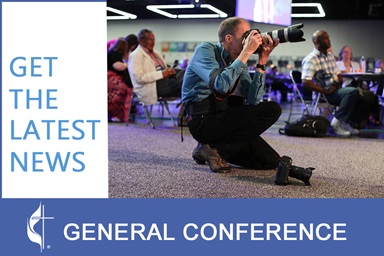To speak of the back story of the 17th century Chinese Torah scroll at Bridwell Library seems inadequate.
Back saga is more like it.
And now there’s one more plot twist. The Torah scroll has gone on a visit to the Vatican, as part of an exhibit organized by The Green Collection/Museum of the Bible.
It will be on display at the Braccio di Carlo Magno museum, adjacent to St. Peter’s Square, through June 22.
The riches of Bridwell—the library of Perkins School of Theology, at Southern Methodist University in Dallas—are well known to Bible scholars. But this apparently is the first time a Bridwell Library item has been displayed at the seat of the Roman Catholic Church.
“It’s a great opportunity for us to be represented in this exhibit and at the Vatican,” said Daniel J. Slive, Bridwell’s head of special collections.
A sleuthing quest
Exactly how Judaism came to Kaifeng, China, remains unclear. Speculation centers on the Silk Road or some other trade route.
Whatever brought it about, the existence of an active Jewish community in Kaifeng from the 12th through mid-19th centuries is well-documented.
In 1642, Kaifeng was besieged by a rebel army, and the Yellow River was diverted as a defensive military measure. Flooding ensued, claiming thousands of lives and destroying the Kaifeng synagogue and its sacred texts.
The faithful there undertook to make new Torah scrolls, copying the first five books of the Hebrew Bible in brown ink on parchment skins. The scrolls were in service by 1653, according to historical accounts.
By the mid-19th century, at least some of the Torah scrolls had been sold. One scroll was purchased in 1851 by the London Society for Promoting Christianity Among Jews.
The society apparently sold the scroll sometime after 1929. In the early 1950s, it was sold again, this time by a Pennsylvania bookseller to Thomas J. Harrison, a Pryor, Okla., businessman, Methodist, and collector of rare Bibles.
But the scroll’s Chinese origins had become obscure.
“It was a scroll, in good condition,” said Eric White, Bridwell’s curator of special collections. “(Harrison) had no idea it was Chinese. This dealer didn’t even offer it as Chinese.”
Soon after Harrison’s death, in 1963, the scroll came to Bridwell Library with Harrison’s Bible collection as a bequest of the trust established in his name.
Bridwell’s staff knew the scroll was unusual, but was as unsure as Harrision had been about its background. The Bridwell Library director at the time, Decherd Turner, eventually turned to Michael Pollak for help.
Pollak was the Jewish owner of a Dallas printing company and a self-taught authority on Judaica and early printing. Bridwell Library was one of his research haunts, and, in 1972, he made the mysterious Torah scroll a sleuthing quest.
In his reading, Pollak learned of the Kaifeng scrolls, including that some were missing. He met in New York with a dealer in antiquarian Hebrew manuscripts, who encouraged him to visit Menahem Schmelzer, librarian of the Jewish Theological Seminary of America. That seminary, also in New York, is home to one of the Kaifeng Torah scrolls.
Schmelzer identified the calligraphic style of the Bridwell Torah as that of the Chinese Jews. Further evidence came in the discovery of the Hebrew word yod-bet, or “twelve,” on the Bridwell scroll, numbering it among the thirteen produced in Kaifeng.
The positive identification made The New York Times on March 10, 1973, under the headline “The Discovery of a Missing Chinese Torah Scroll,” and was included in Pollak’s feature obituary in the Dallas Morning News after his death in 2008.
`Wow, that’s different’
Since its identification, the Chinese Torah scroll has been a standout of the Bridwell Library collection. Because of its age and the risk of deterioration when exposed to light, the scroll is rarely on display. But it’s often brought out from the vault and protective box where it’s kept.
“We show it all the time to classes and visiting groups,” White said.
Descendants of the Kaifeng Jews have come from China to see it. Rabbis locally, but also from Israel, have made their way to Bridwell Library for a viewing.
“A rabbi or anyone who has read Torah scrolls their whole life opens this one and says, `Wow, that’s different,’” White said. “The script is small, delicate and spidery, and it’s in this kind of brown ink. We’re used to larger, bolder, black, blocky letters.”
Slive added, “But it’s clearly Hebrew. People who read Hebrew today would not have any trouble reading this script.”
Special journey
Last November, the Bridwell Torah scroll was shown to a special guest – Jennifer Atwood, curator of special collections of the Museum of the Bible.
The Museum of the Bible/Green Collection currently has an office in Oklahoma City, Okla., and it provides traveling exhibits. But it’s due to have a home in Washington, D.C., by 2017, in the former Washington Design Center. The reconstructed space will house The Green Collection, which has more than 40,000 ancient biblical texts and artifacts.
The Green family of Oklahoma City, owners of the Hobby Lobby Co., (a recent newsmaker for challenging federal requirements that companies cover contraception in employee health insurance) is behind both the collection and nonprofit museum.
In 2012, the Museum of the Bible took an exhibit titled Verbum Domini (“Word of the Lord”) to the Vatican’s Braccio di Carlo Magno museum. It included 150 rare biblical texts and artifacts from The Green Collection.
When visiting Bridwell Library, Atwood was scouting for items to be part of Verbum Domini II: God’s Word Goes out to the Nations, a larger sequel exhibit, to include items beyond the Green Collection.
She fell hard for the Bridwell Torah scroll.
“Not only is it visually interesting due to its provenance, but it has been extremely well-preserved,” Atwood said. “To find a Torah scroll that is almost 400 years old, and was being actively used by a religious community for at least half that time, and yet remains in such pristine condition, is remarkable.”
Atwood made a formal request for a loan of the Bridwell Torah, offering to pick up all expenses related to having it in the exhibit. Bridwell Library officials agreed.
“We are so grateful to be able to partner with the Bridwell Library and SMU through their loan of the Kaifeng Torah scroll,” Atwood said. “The library’s special collections house some truly magnificent pieces, and we hope that this is the beginning of a wonderful relationship between our two institutions.”
On packing day, March 6, a firm called Unified Fine Arts of Dallas arrived with a specially-built box and crate. With White and Slive observing, the Torah Scroll was loaded for transport.
“They’re very good,” White said of the team. “They were in and out in about an hour.”
From Dallas, the Torah Scroll was sent to Oklahoma City, then to Atlanta for a flight to Rome.
Members of the Green family had an audience with Pope Francis on March 31, in connection with the April 2 exhibit opening. The exhibit includes fragments of the Dead Sea Scrolls; a double-page from the Vatican’s Codex Vaticanus, believed to be the oldest surviving manuscript of the complete Christian Bible; and the Bath Old English Gospels, a full translation of the gospels into Old English, from the 11th century.
The latter is on loan from Corpus Christi College, Cambridge, and is on display outside of England for the first time.
On the first day, the free exhibit drew 7,414 visitors. Atwood expects more than 100,000 will see it during the three-month run.
By late July, the better known and better traveled Torah scroll is due back at Bridwell, concluding the most recent chapter in an ongoing tale of faith and endurance.
“Chinese Jews at the Vatican, via Texas and Oklahoma,” White said. “It’s kind of fun.”
*Hodges, a United Methodist News Service writer, lives in Dallas. Contact him at (615) 742-5470 or [email protected]
Like what you're reading? Support the ministry of UM News! Your support ensures the latest denominational news, dynamic stories and informative articles will continue to connect our global community. Make a tax-deductible donation at ResourceUMC.org/GiveUMCom.






